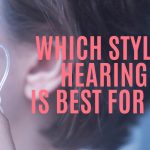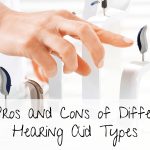When watching TV, people with hearing loss will face obstructions in two areas: loudness and clarity. Turning up the volume might help ensure that sounds are audible. But when clarity or speech comprehension is impaired, things get more complicated. People who struggle with both problems frequently complain that the TV signal is loud enough but not sufficiently clear.
Hearing aids are critical for watching television
A crucial factor in effectively treating hearing loss is the use of hearing aids. Hearing aids are small and efficient devices that make it easier to keep up with conversations, navigate the world around you, and enjoy things such as watching TV.
Treating hearing loss with hearing aids will significantly enhance your quality of life if you have hearing loss, and that includes the experience of watching television.
Hearing aids are now suitable for a wide range of uses, including watching TV. Here are several other things you can do at home to make the TV experience a more pleasant experience with hearing aids.
Set it up correctly
Your hearing professional can program multiple hearing aids in a balanced environment for TV watching. Usually, you work to develop these environments in tandem with the hearing healthcare specialist.
Don’t forget to ask them how to switch between settings. These settings might include noise cancellation that eliminates background noise, helping you to hear more clearly what you are watching.
Make use of Bluetooth
Wearing Bluetooth-compatible hearing aids is one great option for watching TV. These devices will connect to the technology you use every day wirelessly, such as your phone, computer, and, you guessed it, your TV. The audio will stream through your ears when you connect your hearing aids to your TV. It will also block distracting noises, making it even easier to hear what the TV characters are saying. This will make it easier to binge the latest box set with your loved ones!
Bluetooth headphones
Bluetooth headphones are an excellent temporary solution if your hearing aids don’t connect directly to your TV via Bluetooth. This has been a massive area of growth in recent years, and you should have no problems finding a device for you. There are even Bluetooth headphones with noise-canceling technology built in – a boon if you live in a house with many other family members.
Consider sound bar speakers
Soundbar speakers are a perfect way to improve TV sound, and a few claims to have built-in technology for voice enhancement. Some soundbars provide a “Speech Enhancement” environment that aims to improve human voice-related audio frequencies.
Use closed captioning
For those who wear hearing aids, one more solution that can be beneficial is a toggle on your television or video streaming service’s closed captioning. You can see text running at the bottom of the screen when you turn this feature on.
At first, reading the text might seem like a hassle, but you will find that you are not reading the text consciously but picking it up with your peripheral vision with time. You should find a solution that does not require turning up the volume to unbearable volumes.
Closed captioning might also be beneficial for the other family members without hearing loss. The recent trend in Hollywood movies is for the actors to mumble their way through the script – an annoyance for any movie watcher, not just those with hearing loss! Closed captioning can benefit everyone’s understanding of the movie in this way.
Hearing aids are a significant investment that allows you to comfortably participate in the things you love, including watching television. Knowing how to use your hearing aids effectively and what devices and features could better suit your needs will greatly enhance your listening experience!






